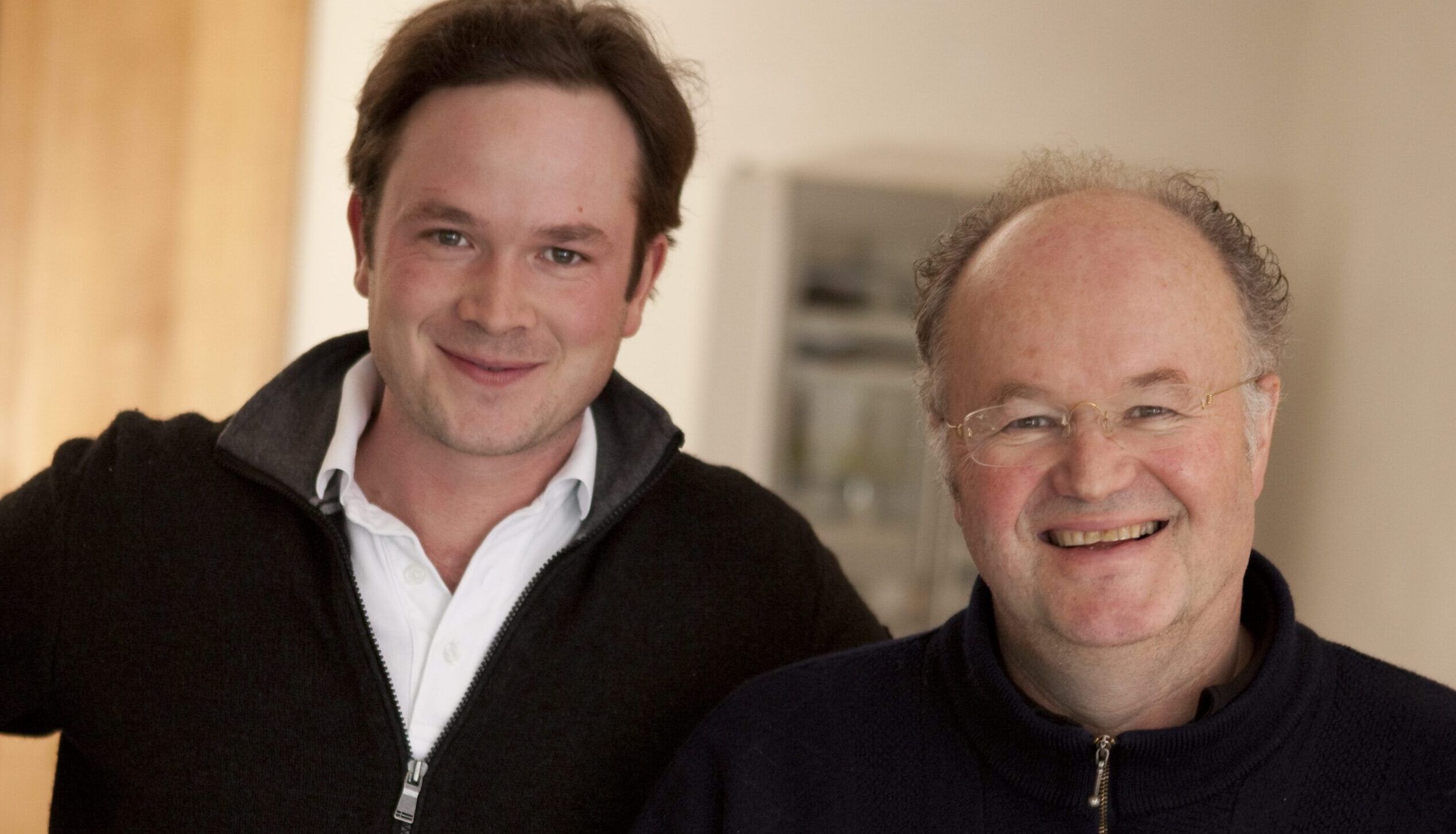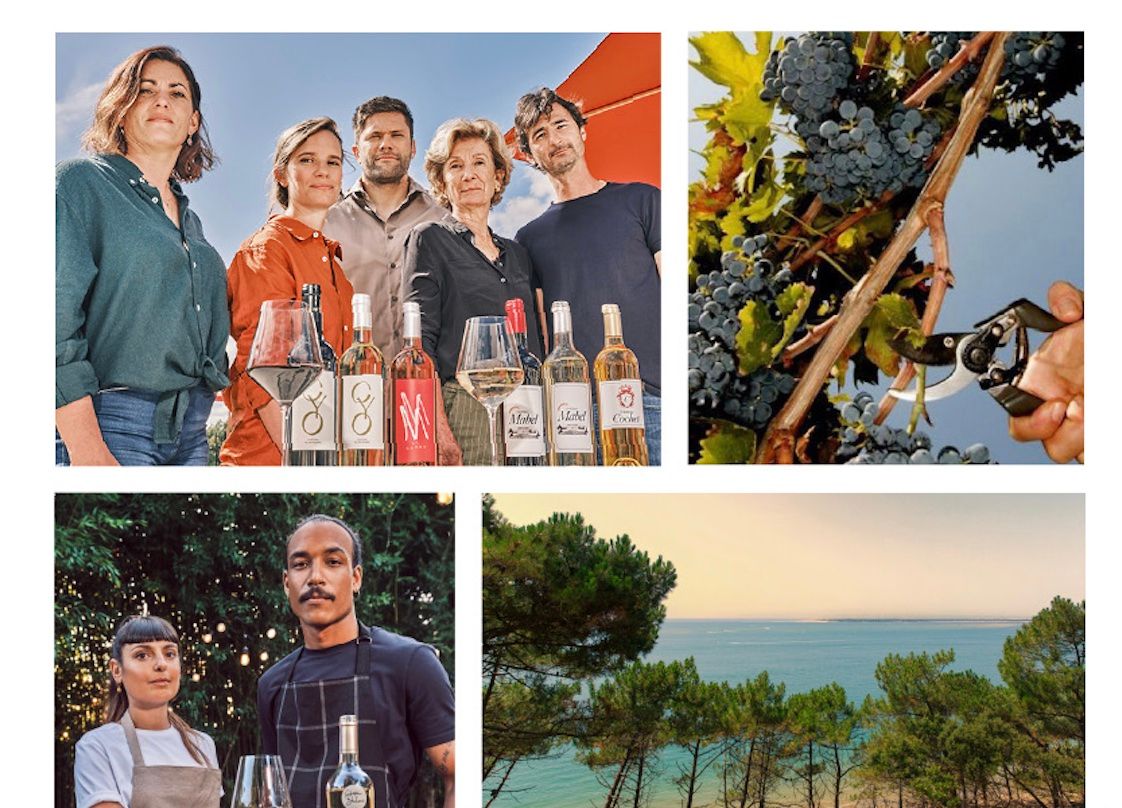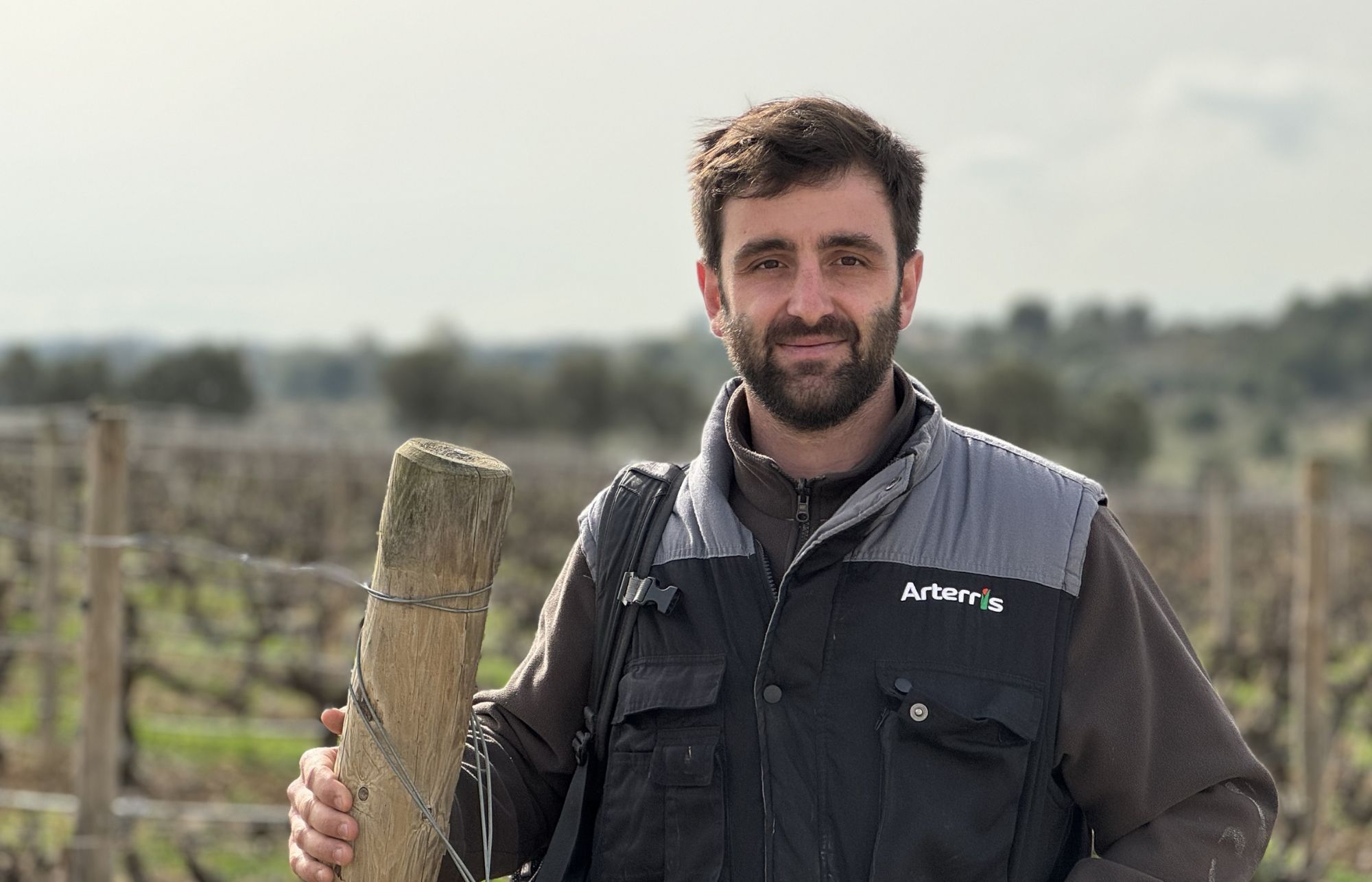“These wines show what a precious and diverse hunting ground Germany has become for Pinot Noir,” writes Krebiehl.
It was a breezy, short tasting but a special one: Elliot Awin of ABS Wine Agencies had asked Sebastian Fürst of Weingut Rudolf Fürst in Franken, Germany, to present his wines. In Germany, these wines enjoy the special status they deserve – over here in the UK they still fly below the radar. This rainy Wednesday afternoon thus provided a rare look at what the Germans know to be one of their very best Pinot Noirs.
Spätburgunder from the west of Franken is characterised by the spicy, fine-boned, transparent nature that the local red, iron-rich sandstone (the Triassic Buntsandstein) confers. This makes them stand apart in their German context. In an international context they are a fascinating facet of this chameleon variety.
There are two main reasons that relatively few people know about this estate: the first is the modesty of both Sebastian Fürst who presented, and his father Paul, the actual pioneer who did so much to move German Pinot Noir forward. The second is the fact that these wines are never loud; they are tender, elegant, never over-oaked – so those who are out for showiness and easy grandezza will miss them.
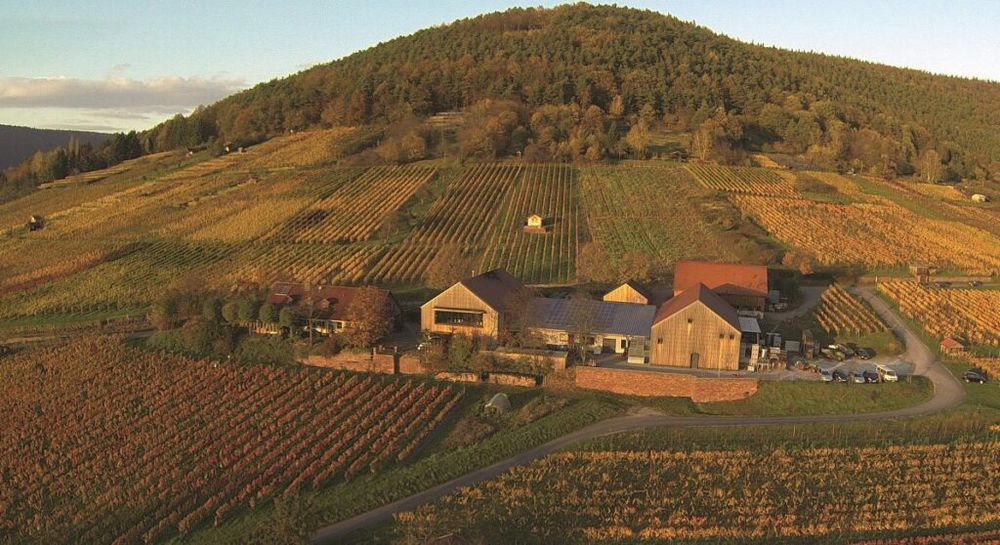
Fürst showed a Chardonnay, a Frühburgunder (aka Pinot Noir Précoce) and four Spätburgunders: their entry-level, an Erste Lage and a Grosse Lage Pinot Noir from 2018 and the same Grosse Lage Centgrafenberg from 2013. I shall start with the Pinot Noirs here with a little appendix on the Chardonnay at the end.
Fürst said that 2018 was the hottest year they ever had – with generous yields and absolutely healthy fruit. Usually in Fürst’s cool corner of Franken, the warmer years are a boon, but in 2018 things were so different that they started harvesting at the same time as much warmer regions like Baden.
Fürst explained that the Buntsandstein soils are exceptionally poor, often with just 30cm reddish topsoil on thick, solid layers of rock. For Sebastian’s father Paul, this is the very reason that the wines are so transparent, for want of a better word, and do not forgive any mishandling, any faux pas in vineyard or cellar.
We started with what Fürst called “maybe our most important wine in the winery” with an annual production of 15-20,000 bottles: The Fürst Spatburgunder Tradition 2018. It is from the red sandstone in Klingenberg and Grossheubach, a blend from vines that are up to 45 years old and planted just underneath the Centgrafenberg and younger vines within the Centgrafenberg, one of their sites classified as Grosse Lage – the other two are Hundsrück and Schlossberg. It is a blend of two thirds German Pinot-genetics and one third French Pinot genetics.
Paul’s father had been among the first in Germany to look into good planting material – long before it was fashionable – homing in on various German and French clones and selections and making the most of the diversity on offer. Fürst noted that this wine is usually made from yields of 40hl/ha but the generosity of 2018 had given them almost 50hl/ha – the highest yields ever on his poor soils. Like all the reds, this was vinified in open-top fermenters with a gentle cool-down after harvest to 10-13°C and a spontaneous ferment starting a few days later. At the early stages of the ferment there are just gentle pumpovers that are replaced by punchdowns in the latter stages of the ferment. After 17-21 days on skins the wines are pressed in a basket press and put into 228l barrels. While this goes for all the Fürst Pinot Noirs, this is the only wine that has no new wood at all and just stays in barrel for one year before being bottled unfiltered.
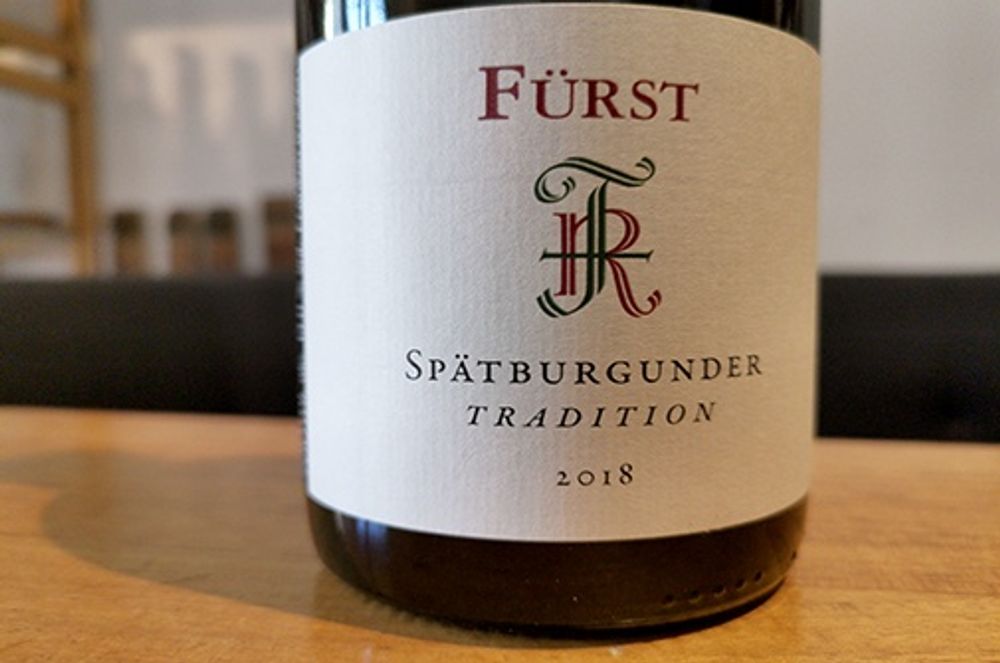
Fürst Spätburgunder Tradition 2018, Franken, 13%
Gorgeously juicy, bright fresh and translucent (even though Fürst says that this is the deepest colour they have ever had on this wine). More air reveals that tell-tale smell of iron-oxide and blood. A kind of peony darkness hovers over the red, ripe cherry fruit and casts a darker tone than usual. There is also a lovely notion of dried rose petal and a distant sense of clove that gives this a rather mouth-watering aspect. This has the sandstone elegance but comes with bolder, juicier fruit than usual.
Next up is Fürst Bürgstadter Berg Frühburgunder 2018. Frühburgunder is a mutation of Spätburgunder that ripens earlier. It used to be prized for having this head-start in a once much cooler Germany, and for having milder acidity. Bürgstadt traditionally was a Frühburgunder hotspot in Germany. However, if you think Pinot Noir is fickle, its sibling Pinot Noir Précoce is soul-destroying. With super-thin skins it just implodes with a little moisture in the air and even in brilliant years yields will not exceed 25hl/ha. But 2018 was such a brilliant year and the Fürsts’ painstaking labour was for once rewarded. Fürst told us that within just a day or two the yield can halve if the weather is not clement – and that these early-ripening grapes are also a favourite of the local wild boar.
Comparing it to Spätburgunder, Fürst describes Frühburgunder thus: “The vine looks the same, the leaves are the same, but Frühburgunder starts to turn colour one to two weeks earlier. Yield is always much lower, its character is a little smokier, it has more fruit-sweetness, it has a little less acidity, it opens up earlier, it is very aromatic, never as fine as Spätburgunder, very multi-layered. It is a wine that can go with very powerful dishes,” he says, suggesting the German way of braised venison served with cranberry compote. “For us it is a very traditional variety.”
Fürst Bürgstadter Berg Frühburgunder 2018, Franken, 13%.
Also from red sandstone soils, the Frühburgunder is distinctly reduced and flinty – for once not beguiling with its usually heady aromas. But the palate is one huge mouthful of generous juiciness. There is more oomph here and more obvious, ripe cherry fruit. A plush wine from a plush year that played into its hands to produce real, juicy fleshiness.
Fürst Bürgstadter Berg Spätburgunder 2018, Franken, 13%
A subtle smokiness hovers on the tender red cherry nose. The body has a lovely freshness, depth rather than concentration and that wonderfully red-fruited sinuousness. There is something luminous, vivacious and energetic at its heart, reverberating in this elegant frame. Yes the fruit is ripe, but this is juicy, vivid and fresh.
This wine prompts Fürst to speak about the use of whole bunches in fermentation. “One fact about 2018, or the best, it the beautiful ripeness of the bunches. So we could work with 100% whole cluster. There are some wines we do this with, like Hundsrück, but never with Centgrafenberg. The stems were beautifully ripe, the pips were ripe so we decided to get all the freshness we could. For me, stems are not only about structure, but also about the green, minty character we can get from whole clusters. So the Bürgstadter Berg Frühburgunder and Spatburgunder are both fermented with 60% whole cluster.”
The two Fürst Centgrafenberg Spätburgunder Grosse Gewächse were tasted parallel. “It is nice to compare two really different vintages – the hottest and the coolest,” Fürst said. “For me it is quite interesting that even if it was the hottest and one of the coolest vintages, these are not the two vintages furthest from each other. For me, 2018 has a less hot character than the vintages 2009, 2012 and 2015. They show more richness, less tension and less acidity, but 2018 is not too far away. The fruit in 2018 is a fruit of a warmer vintage but the freshness is there.”
He continued: “Centrgrafenberg is our most important vineyard site. It’s the vineyard that has always been in our family. Compared to Schlossberg and Hundsrück it is a cooler style; it has a little more tannin. Schlossberg is our most gentle, smooth wine that opens up earlier and is warmer; Hundsrück is more masculine and Centgrafenberg really is cooler.”
About the vintage he said: “2013 had very low yields, one of the lowest ever. There had been no frost, no hail, nothing, but flowering was poor, cool and rainy so we had small berries, small bunches. The nights were cool and we picked this into October, this happens very rarely. We now usually pick early to mid-September. 2013 was a year where we decided to use only few whole bunches, perhaps only 20-30% – in 2013 we had enough freshness and we had to do a lot of selection work.”
Fürst Centgrafenberg Spätburgunder Grosses Gewächs 2018, Franken, 13.5%
Again that stony, petrichor-like iron oxide note plays around the high-toned red cherry note on the nose. There is a floral edge, too, and some dried yarrow. There is lovely freshness, slenderness, a beautifully translucent, velvety texture and a depth that comes with plush richness and real concentration. Yes, the heat of 2018 peeps through, but it is firmly caught in its structural web, that is both fine and defined. The stems really shine through with wonderful firmness.
Fürst Centgrafenberg Spätburgunder Grosses Gewächs 2013, Franken, 13.5%
An initial whiff of lovage and bay leaf immediately gives a savoury impression. The taut palate then adds notions of blood orange peel and tart cherry. There is a lovely curve within that slenderness and such aromatic depth. Later on, there is a real blast of white pepper and still vivid fruit. The aromatics are such that they creep up slowly as you savour. Nothing here is obvious apart from elegance. This is only just hitting its stride. The peppery length is phenomenal.
These wines show what a precious and diverse hunting ground Germany has become for Pinot Noir. Paul Fürst was one of the driving forces behind Germany’s incredible Pinot Noir revolution. Yet he has never sought the limelight, neither does his son Sebastian. They just carry on crafting these gorgeous wines with uncommon sensitivity, great intuition and with just one aim in mind: elegance.
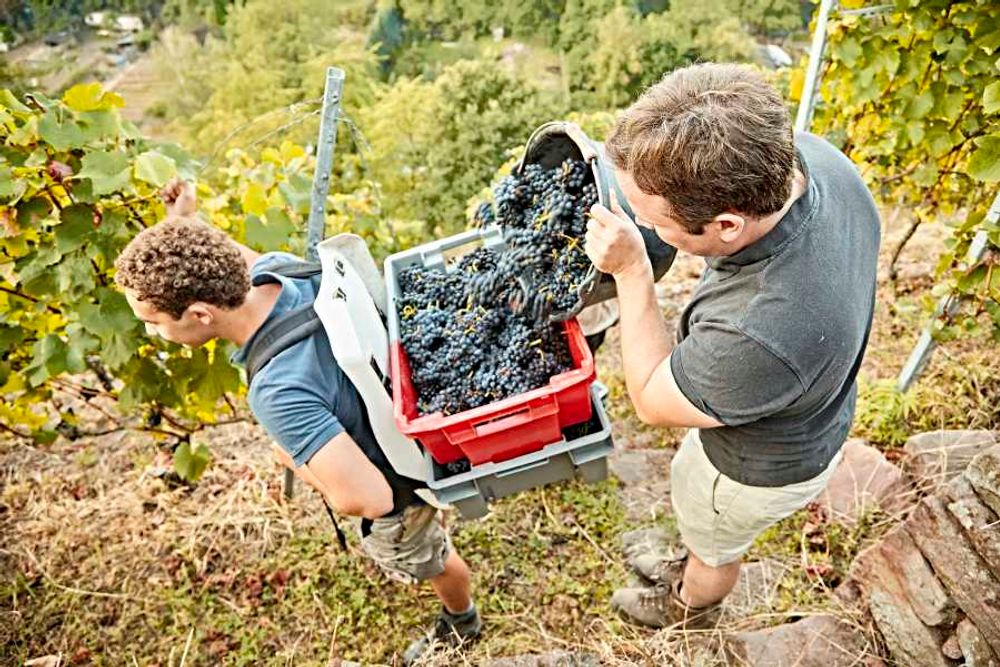
©Bayern.by-Gert Krautbauer
But there was more – a taster of German Chardonnay from people who really care deeply about everything they do.
Unusually, Fürst started with a Chardonnay – “because Chardonnay is one of my favourite varieties. Chardonnay has always been one of the hottest topics for me.” And while he and his father experiment with both Riesling and Pinot Noir every year, with Chardonnay their experimentation is more adventurous – and I guess there is a style to be defined with this non-indigenous variety in Franken.
Fürst noted that the wine was made from 10-15 year-old-vines grown on the poor and stony Astheimer Karthäuser vineyard, about 100km away in deepest Silvaner country within the same loop of the river Main as the Escherndorfer Lump vineyard. The older vines go into the reserve Chardonnay, the younger ones are used to add more freshness and texture to their Weissburgunder. Picked in small crates, crushed only slightly and pressed right away without maceration, the Chardonnay is fermented in used 228-l barrels of which only about 10% were new. It went through a full and non-inoculated malo-lactic fermentation and stayed on its gross lees for a year. Then it was placed into stainless steel along with its gross lees for a further winter before being bottled the following March. Fürst noted that this is something he had picked up from Guy Roulot during his time in Burgundy. “This really keeps it on the fresh side while allowing it to mature on the lees.” This second winter on gross lees really makes all the difference to Fürst.
The Weingut Rudolf Fürst Astheimer Chardonnay 2018 – village wine, 12.5% ABV – smells of ripe lemon and chalk and is a really textured, smooth, creamy Chardonnay with ripe lemon juiciness. With more air a real sense of ripe stone fruit pervades, but that buffered limestone nature is never far from the surface. There is just a slight kiss of oak. Funnily enough, this stands here as a well-made, elegant, balanced Chardonnay but nothing about it points to Germany, or possibly Franconia at all.
